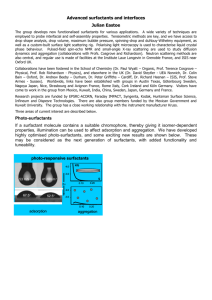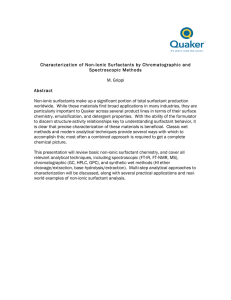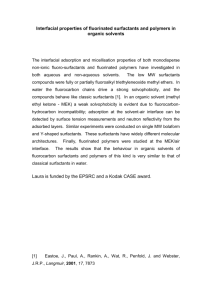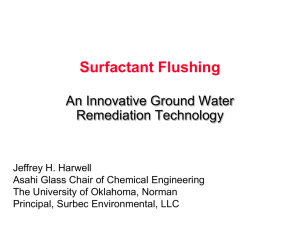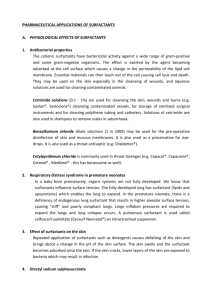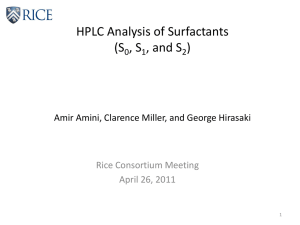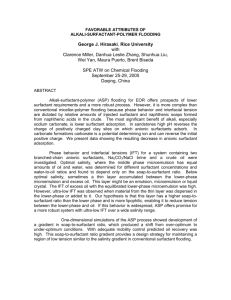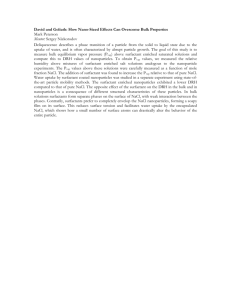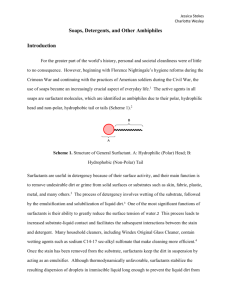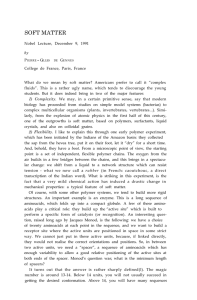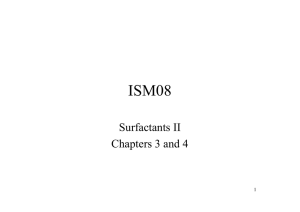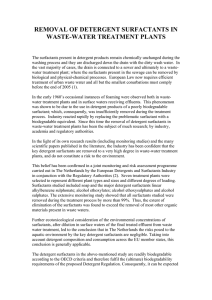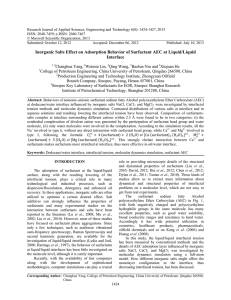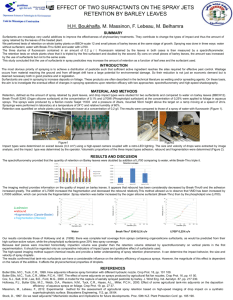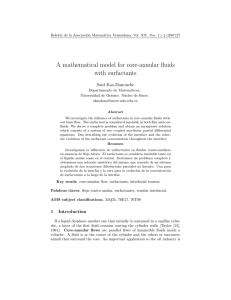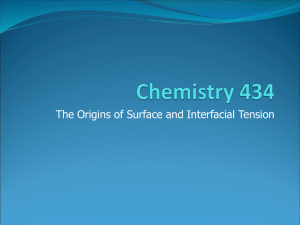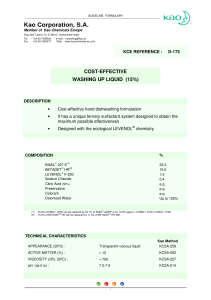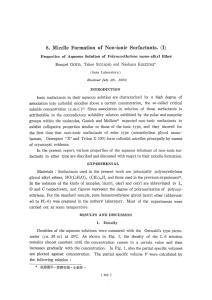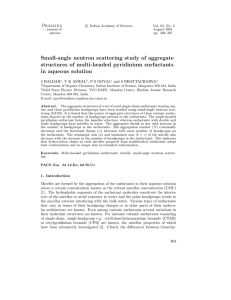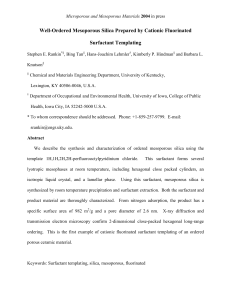decontamination of solid matrixes in the nuclear industry using
advertisement
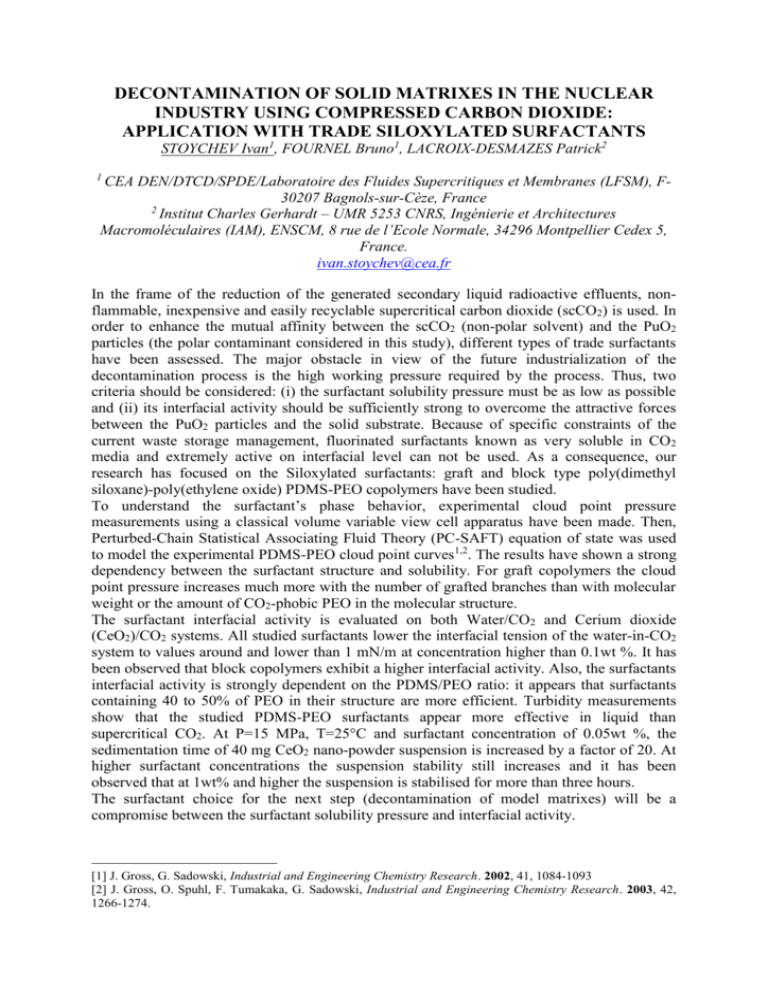
DECONTAMINATION OF SOLID MATRIXES IN THE NUCLEAR INDUSTRY USING COMPRESSED CARBON DIOXIDE: APPLICATION WITH TRADE SILOXYLATED SURFACTANTS STOYCHEV Ivan1, FOURNEL Bruno1, LACROIX-DESMAZES Patrick2 1 CEA DEN/DTCD/SPDE/Laboratoire des Fluides Supercritiques et Membranes (LFSM), F30207 Bagnols-sur-Cèze, France 2 Institut Charles Gerhardt – UMR 5253 CNRS, Ingénierie et Architectures Macromoléculaires (IAM), ENSCM, 8 rue de l’Ecole Normale, 34296 Montpellier Cedex 5, France. ivan.stoychev@cea.fr In the frame of the reduction of the generated secondary liquid radioactive effluents, nonflammable, inexpensive and easily recyclable supercritical carbon dioxide (scCO2) is used. In order to enhance the mutual affinity between the scCO2 (non-polar solvent) and the PuO2 particles (the polar contaminant considered in this study), different types of trade surfactants have been assessed. The major obstacle in view of the future industrialization of the decontamination process is the high working pressure required by the process. Thus, two criteria should be considered: (i) the surfactant solubility pressure must be as low as possible and (ii) its interfacial activity should be sufficiently strong to overcome the attractive forces between the PuO2 particles and the solid substrate. Because of specific constraints of the current waste storage management, fluorinated surfactants known as very soluble in CO2 media and extremely active on interfacial level can not be used. As a consequence, our research has focused on the Siloxylated surfactants: graft and block type poly(dimethyl siloxane)-poly(ethylene oxide) PDMS-PEO copolymers have been studied. To understand the surfactant’s phase behavior, experimental cloud point pressure measurements using a classical volume variable view cell apparatus have been made. Then, Perturbed-Chain Statistical Associating Fluid Theory (PC-SAFT) equation of state was used to model the experimental PDMS-PEO cloud point curves1,2. The results have shown a strong dependency between the surfactant structure and solubility. For graft copolymers the cloud point pressure increases much more with the number of grafted branches than with molecular weight or the amount of CO2-phobic PEO in the molecular structure. The surfactant interfacial activity is evaluated on both Water/CO2 and Cerium dioxide (CeO2)/CO2 systems. All studied surfactants lower the interfacial tension of the water-in-CO2 system to values around and lower than 1 mN/m at concentration higher than 0.1wt %. It has been observed that block copolymers exhibit a higher interfacial activity. Also, the surfactants interfacial activity is strongly dependent on the PDMS/PEO ratio: it appears that surfactants containing 40 to 50% of PEO in their structure are more efficient. Turbidity measurements show that the studied PDMS-PEO surfactants appear more effective in liquid than supercritical CO2. At P=15 MPa, T=25°C and surfactant concentration of 0.05wt %, the sedimentation time of 40 mg CeO2 nano-powder suspension is increased by a factor of 20. At higher surfactant concentrations the suspension stability still increases and it has been observed that at 1wt% and higher the suspension is stabilised for more than three hours. The surfactant choice for the next step (decontamination of model matrixes) will be a compromise between the surfactant solubility pressure and interfacial activity. [1] J. Gross, G. Sadowski, Industrial and Engineering Chemistry Research. 2002, 41, 1084-1093 [2] J. Gross, O. Spuhl, F. Tumakaka, G. Sadowski, Industrial and Engineering Chemistry Research. 2003, 42, 1266-1274.
